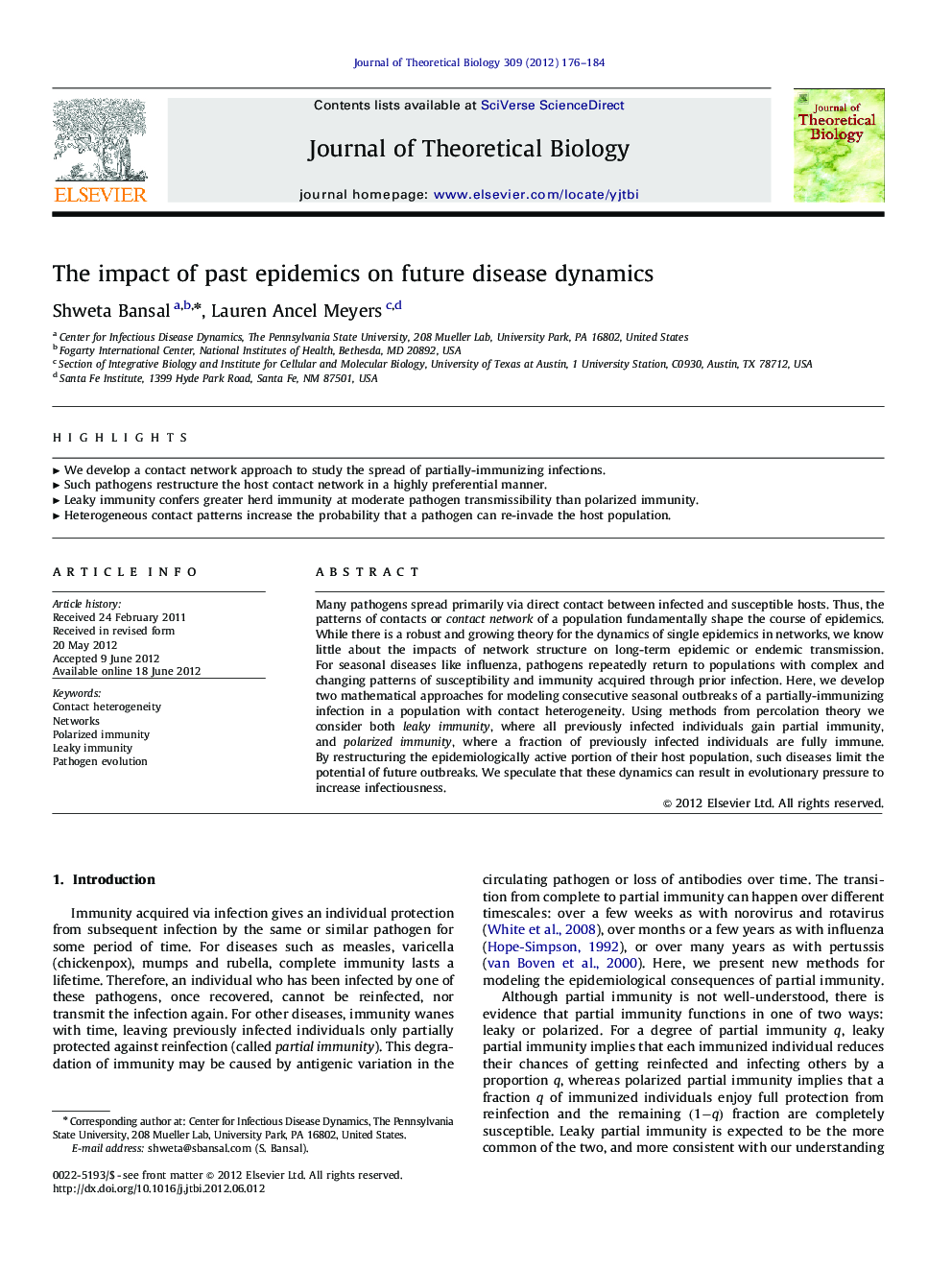| Article ID | Journal | Published Year | Pages | File Type |
|---|---|---|---|---|
| 4496620 | Journal of Theoretical Biology | 2012 | 9 Pages |
Many pathogens spread primarily via direct contact between infected and susceptible hosts. Thus, the patterns of contacts or contact network of a population fundamentally shape the course of epidemics. While there is a robust and growing theory for the dynamics of single epidemics in networks, we know little about the impacts of network structure on long-term epidemic or endemic transmission. For seasonal diseases like influenza, pathogens repeatedly return to populations with complex and changing patterns of susceptibility and immunity acquired through prior infection. Here, we develop two mathematical approaches for modeling consecutive seasonal outbreaks of a partially-immunizing infection in a population with contact heterogeneity. Using methods from percolation theory we consider both leaky immunity, where all previously infected individuals gain partial immunity, and polarized immunity, where a fraction of previously infected individuals are fully immune. By restructuring the epidemiologically active portion of their host population, such diseases limit the potential of future outbreaks. We speculate that these dynamics can result in evolutionary pressure to increase infectiousness.
► We develop a contact network approach to study the spread of partially-immunizing infections. ► Such pathogens restructure the host contact network in a highly preferential manner. ► Leaky immunity confers greater herd immunity at moderate pathogen transmissibility than polarized immunity. ► Heterogeneous contact patterns increase the probability that a pathogen can re-invade the host population.
